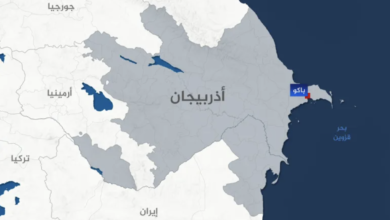India says ties with China can’t be normal with border tension
India’s foreign minister says ties with China cannot be normal as long as there is a huge deployment of troops along their disputed border.
After a three-hour meeting with his Chinese counterpart Wang Yi in New Delhi, Subrahmanyam Jaishankar told a news briefing on Friday that frictions and tensions on the border cannot be reconciled with normal relations.
Yi arrived in the city unannounced on Thursday, the most senior Chinese official to visit India since border clashes in the northern Himalayan region of Ladakh in June 2020 led to a sharp deterioration in relations between the Asian giants.
The Chinese top diplomat also met India’s powerful national security adviser, Ajit Doval.
Neither side had announced the visit before Wang landed in New Delhi late on Thursday. Footage from the Reuters’ India partner ANI showed him coming out of the commercial airport rather than the defence facility nearby where most foreign dignitaries land.
Jaishankar noted in a speech on Thursday the deterioration in ties and stressed the importance of the coordination of foreign and defence policies, which he said were “joined at the hip”.
“Few would have anticipated … the turn that India’s relations with China have taken in the last two years,” he said.
“Any prudent policy therefore backs its posture with capabilities and deterrence. A big responsibility of Indian diplomacy, therefore, is to create the widest set of options for such contingencies.”
Wang drew a rebuke from the Indian government ahead of his trip for remarks made in Pakistan this week on the disputed Kashmir region. India and Pakistan rule Muslim-majority Kashmir in part but claim in full, and China has generally stood by its close ally Pakistan.
Relations between China and India worsened after a June 2020 border clash in the Ladakh region of Indian-administered Kashmir killed at least 20 Indian and four Chinese soldiers.
The two sides are expected to talk about the border tension as well as Russia’s invasion of Ukraine. Both consider Russia a friendly nation and have rejected Western calls to condemn the aggression from Moscow, which it calls a special military operation.
Yi visited Pakistan and Afghanistan this week and was set to fly to Nepal later in the day on a whirlwind tour of South Asia where China is trying to deepen its
influence.
Border tensions
Thousands of Indian troops remain deployed along India’s remote border with China in Ladakh’s Galwan valley in the Himalayas, where hand-to-hand fighting broke out in 2020 – the first deadly encounter between the nuclear-armed neighbours in decades.
Their unmarked 3,500km (2175 miles) long frontier has remained largely peaceful since a border war in 1962, and both countries still claim vast swathes of each other’s territory.
After the Galwan clash, senior officers from the two militaries have held more than a dozen rounds of talks to de-escalate the standoff in Ladakh, but progress has been limited.
Last February, after multiple military talks, Indian and Chinese troops completed a pullout from a lake area in Ladakh. Days later, Wang Yi and Jaishankar agreed to set up a hotline.
Beijing has repeatedly said that the border standoff does not represent the entirety of China-India relations, while New Delhi has maintained that peace along the frontier is essential for the two countries to work together.
New Delhi, however, has numerous other concerns regarding China’s activities in almost all of India’s neighbours.
Aside from the tensions in the Himalayas, India’s mistrust stems from Beijing’s support of old foe Pakistan, the competition for influence in Nepal, and concern over China’s economic clout in Bangladesh, Myanmar and Sri Lanka.
Trade relations
China is India’s largest trading partner, with bilateral trade expanding exponentially since the turn of the century to $95bn in 2021-22.
Trade remains heavily tilted in Beijing’s favour. India’s trade deficit with China is the largest it has with any county, and the imbalance has been steadily widening.
More than 100 Chinese companies operate in India, including state-owned enterprises and electronics manufacturers that have come to dominate India’s mobile phone market.
Since 2020, however, New Delhi has tightened the screws on Chinese players in Asia’s third-largest economy by increasing scrutiny of investments or imports and banning some mobile apps.
The Indian government had previously held up investments worth billions from Beijing, but last week said that approvals for 66 proposals from neighbouring countries – including China – totalling $1.79bn had been approved.
Last month, India also blocked access to dozens of Chinese apps over security concerns, increasing the tally of such restricted mobile apps to more than 300.
SOURCE: NEWS AGENCIES





